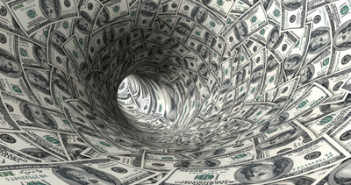The FOMC Minutes certainly gave the QE3 camp a lot of ammunition, and dealt a blow to the US dollar. Nevertheless, a decision on more money printing in the September 12-13 meeting is certainly not a done deal.
Here are 7 reasons why markets could be very disappointed on September 13th, and the dollar could make a big comeback. No, it’s not the proximity to the elections.
1) Is there a smoking gun?
From the minutes:
Many members judged that additional monetary accommodation would likely be warranted fairly soon unless incoming information pointed to a substantial and sustainable strengthening in the pace of the economic recovery.
This is supposedly the “smoking gun”. But many questions rise: How many is many? Is there a clear majority? In addition, these members support “additional monetary accommodation”. This doesn’t necessarily mean QE3.
2) Option of changing guidance
The Fed added a conditional pledge to keep rates low in the summer of 2011. This was extended in the January 2012 meeting and currently states that rates will likely remain low until late 2014.
A change in guidance was also discussed: instead of setting a potential date for tightening, the Fed could tie the tightening to economic factors.
3) Ideas from overseas
The Fed also discussed the British Funding for Lending scheme and the ECB’s cut of the deposit rate to 0% as possible tools for easing. These are new ideas, and the Fed has been quite creative in the past.
4) Easing only if economy doesn’t improve
This is a clear condition for more easing (which isn’t necessarily QE3). Since this meeting was held on July 31st and August 1st, there were some encouraging signs: retail sales rebounded, housing continued improving and most importantly, job gains were significantly stronger. Manufacturing remained weak.
There is one more Non-Farm Payrolls report before the next meeting on September 12-13th. Another positive report could lower QE3 expectations even before the meeting, but this is still to be seen.
In this context, it’s important to note that FOMC member Dennis Lockhart acknowledged the improvement in the economy after showing support for more bond buys during July. Lockhart is a “swing” member – he doesn’t always side with the doves or the hawks. His small shift to the hawkish side is significant. Are other members also acknowledging the improvement?
Update: Also FOMC member James Bullard acknowledged the recent improvement and even said that the “FOMC minutes are a bit stale“.
5) Yields are still low, food and oil are high
QE1 was launched to lower long term interest rates and encourage lending. Despite recent rises, 10 year bonds yield less than 2%. QE2 was launched to counter the potential deflation. Oil and food prices haven risen lately. How can more bond buys stimulate the economy?
6) European situation improving
One of the issues weighing on the US is the uncertainty about the European debt crisis. A weaker euro-zone means less economic activity for the US, and a significant event could hurt US banks. The European crisis was also mentioned by the Fed in various papers and statements.
Since Draghi opened the door for QE in Europe, the mood in the markets has improved. With a recent German approval to buying of Spanish bonds, the ECB seems ready to act on its September 6th meeting, as long as Spain officially asks for help.
7) Using expectations to keep yields low?
Since QE2 ended on June 30th 2011, Bernanke and his colleagues always left the door open for more QE, using subtle hints.
Keeping expectations high also contributed to lower yields. Investors buy bonds at a certain price and expect the Fed to buy it for a more expensive price (lower yields). Are these minutes going along the same lines?
It would not be surprising if the Fed refrained from launching QE3 in the September meeting but rather opts to use more moderate tools.
If the Fed does go for more dollar printing, it would be possible to suspect that the Fed is on a new course of monetary policy: inflating debt away.
